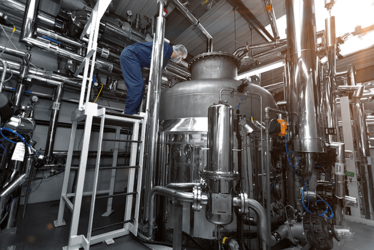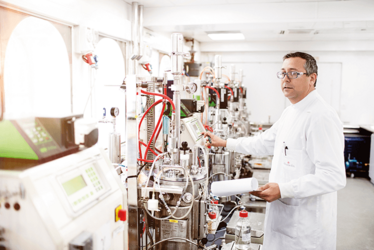Being (Bio)Better
Why stop at biosimilar when improvements can be made? Biobetters can be challenging to develop, but offer dual rewards: more effective medicines for patients and valuable intellectual property for the developer.
Biological drugs have undoubtedly revolutionized treatment (and the pharma industry), but there is a downside – cost. The complex manufacturing processes and quality control required to develop safe and effective biopharma medicines tend to result in expensive final products, causing problems for cash-strapped healthcare systems (and negative media coverage for the industry). Less costly – but therapeutically equivalent – versions of approved biologics are therefore in high demand. This is why biosimilars are well established in Europe, and are making inroads into the US market. But given the highly competitive biosimilar space, many companies are seeking an edge – striving for biobetters.
A biobetter addresses the same target as an existing biopharmaceutical (and usually through the same mode of action), but aims to provide an improvement; for example, by enhancing safety, efficacy, or tolerability, or by offering a better dosing regimen. “Better” can be achieved by making structural changes to the original biologic (through chemical modification, amino acid alteration or protein fusion) or by opting for an improved formulation method, amongst other options.


The biobetter pathway
One well-known and clinically proven route towards a biobetter is to increase the size of the original biologic to above the kidney filtration limit by chemically attaching polyethylene glycol (PEG). PEGylation can be achieved by random conjugation to exposed chemical attachment sites on the protein surface or via site-specific conjugation to pre-existing or mutationally introduced attachment sites. PEGylation has a long history of use for G-CSF, erythropoietin, interferon-α and interferon-β, but achieving a homogenous product can be challenging. The resultant PEGylated product can have reduced bioactivity and, a nondegradable polymer, PEG can also accumulate in the body, leading to renal tubular vacuolation, amongst other issues.
A size increase can also be achieved by boosting the O- or N-linked glycosylation status of the biologic. Like site-specific conjugation of PEG, the introduction or creation of an N-linked glycosylation attachment site (N1X2Ser/Thr3, avoiding a proline at X2) by genetic modification at a suitable site within the biologic can enhance a drug’s half-life, while minimizing the negative impact on potency. To date, this approach has only been successfully applied to erythropoietins and, unlike PEGylation, it also limits the production to mammalian cell culture.
Non-covalent association of the drug to a well-known, large endogenous circulating plasma protein, such as albumin, is yet another approach. The ability of albumin to bind to fatty acids has been specifically exploited in the development of insulin detemir, a myristoylated insulin analogue with the (14-carbon saturated) fatty acid chemically attached to a specific lysine. Insulin degludec is an ultra-long acting insulin with palmitic diacid (a 16-carbon saturated fatty acid) attached to the same lysine; the longer fatty acid side chain further prolongs the plasma half-life of insulin degludec.
Following the same principle, liraglutide is a glucagon-like peptide 1 (GLP-1) (7-37) analogue with a palmitoylated Lys 26 and arginine substituted for Lys 37. A new acylated, long acting GLP-1 analogue with a half-life that enables once-weekly dosing – semaglutide – was developed by substituting Ala 8 with alpha-aminobutyric acid to reduce degradation by the protease dipeptidyl peptidase-4 (DPP-4), while Lys 26 is modified with stearic diacid.
A number of biosimilars have been created by adding fatty acids, additional carbohydrate chains or chemical polymers, but advances in protein fusion technology are really revolutionizing the field. Like PEGylation, protein fusion aims to increase the hydrodynamic radius to reduce elimination via kidney filtration. Synthetic peptides with large hydrodynamic radii can be used; for example, random peptides composed of the amino acids Ala, Glu, Gly, Pro, Ser and Thr (XTEN), a glycine rich homo-amino acid polymer (HAPylation), or a Pro, Ala, Ser polymer (PASylation). Alternatively, the drug can be fused to a protein with an intrinsically long circulatory half-life, such as albumin, transferrin, or the Fc portion of IgG. Albumin and IgG have the longest circulatory half-life of any plasma protein (approximately three weeks) because of their additional interaction with the FcRn receptor.
Albumin advantage
The path you choose to develop your biobetter will depend on the biologic you are working with. Out of all the approaches available, many companies are focusing on albumin, which has been used in a number of biobetter products already. For example, paclitaxel is a hydrophobic chemotherapeutic drug, which binds to circulating albumin in the bloodstream and is transported around the body. Because of its low aqueous solubility, paclitaxel can be formulated in a blend of solvents, and diluted in bags before patient administration. However, the solvent cocktail has been associated with significant side effects including hypersensitivity reactions, nephrotoxicity and neurotoxicity – all of which must be managed separately by the administrating clinicians. In response, an alternative albumin-based formulation was developed. Abraxane (marketed by Celgene) is an albumin-bound biobetter formulation of paclitaxel, which is composed of water soluble ~130 nm albumin-paclitaxel nanoparticles – and so avoids the need for solvents. After injection, the albumin nanoparticles dissociate and the paclitaxel circulates associated with albumin. Abraxane is approved for the treatment of breast, pancreatic, and non-small cell lung cancer, and is currently in clinical development for the treatment of melanoma, bladder and ovarian cancers.
Albumin is widely distributed throughout the human body and can bind a range of ligands, including metal ions, hormones, bilirubin, hemin, as well as a range of hydrophobic molecules. For drug developers, including biobetter developers, there are a number of factors that make albumin intriguing. Albumin is highly stable and soluble – and, as noted earlier, it has a half-life of three weeks (a combination of its size and interactions with cell-surface proteins and the neonatal Fc receptor, which mediates a salvage mechanism that rescues albumin from degradation). Small angle X-ray diffraction studies have shown that, in free solution, albumin molecules repel each other, which is perhaps why albumin also reduces drug aggregation (1).
Albumin can be covalently attached to the drug by chemical conjugation, but genetic fusion is an alternative strategy (2), which has been exploited by GlaxoSmithKline and CSL Behring with GLP-1 (Tanzeum/Eperzan) and Factor IX (Idelvion), respectively. Tanzeum/Eperzan is an approved once-weekly Type 2 diabetes treatment, while Idelvion is the first approved hemophilia treatment to offer up to 14-day dosing intervals. The extended circulatory half-life significantly reduces the burden on the patient and, in the case of Idelvion, has allowed prophylactic treatment for adults and children that can help prevent bleeding while relieving the stress of frequent treatment from the patient and their family.
There is also evidence that albumin fusions are less immunogenic than half-life extension strategies based on PEGylation – a very important point given that anti-drug antibodies (ADA) can impact drug efficacy and drug clearance, or cross-react with related proteins. Over 20 percent of patients who receive PEGylated IFN developed ADA, compared with less than 1 percent who received an albumin-IFN fusion (3). Similarly, ADA were generated in 0.9 percent of those receiving PEGylated G-CSF, but in only 0.5 percent of patients receiving an albumin G-CSF fusion (4).
Scientists have further characterized the mechanism by which FcRn rescues albumin from intracellular degradation to increase its circulatory half-life (5). In particular, teams have identified variants of albumin with differing affinities for FcRn. These variants have correspondingly different serum half-lives, which means it should be possible to give a drug a longer or shorter half-life based on need. Reducing the half-life, for example, may be useful in cases where extended drug exposure is associated with adverse reactions.
Developing better medicine
With drug development costs continuing to rise – and with many patients missing out on new medicines because of cost barriers – it is imperative that the industry considers alternatives. Since biosimilars and biobetters are based on existing drugs, they are relatively low risk; the biological target for therapeutic intervention has already been validated. The approved drug will also have the required potency, an acceptable dosing size, interval, and route of administration, as well as the necessarily acceptable toxicological, side-effect and adverse reaction profiles. In addition, the required in vitro and in vivo model systems, along with the necessary clinical biomarkers and end points, will have been developed, validated and accepted during the clinical phases and at the approval stage. What does that mean? It allows developers to reduce R&D set-up costs and de-risk the clinical development by “borrowing” from an existing knowledge bank.
Given that biobetters are considered to be new chemical entities, marketing approval requires a new data package (quality, efficacy and safety), and more work than developing a biosimilar, which may leave you wondering why you should invest. Apart from the chance of bringing better medicines to patients, there are business advantages to consider. For example, the higher barriers to entry in the biobetters field automatically limit the number of competing products – and biobetter improvements can offer commercial advantages in the marketplace; biosimilars can only compete on cost. The drive to develop a biobetter arises from the known suboptimal performance of the original drug (for example, in vitro or in vivo chemical or structural instability, product heterogeneity, immunogenicity, or a suboptimal formulation in terms of handling before or during administration to the patient).
To date, biobetter developers have focused their attention on developing new products with improved formulations, greater in vitro or in vivo stability and longer circulatory half-lives. In the future, the largely untapped potential of biobetters to deliver enhanced drug performance by increasing the drug delivered to the desired anatomical location or target tissue at the desired quantities, while reducing off-target toxicity and adverse events, will be more widely explored.
By improving on the characteristics of an original drug, aspects of each biobetter are highly likely to be patentable, creating opportunities for intellectual property. Development of biobetters also represents a cost-effective life cycle management strategy; if the originator becomes the biobetter developer, it can extend market exclusivity and provide the means to compete in a crowded product field through performance differentiation.
Darrell Sleep is Chief Scientific Officer at Albumedix, Denmark.
- D Sleep, “Recombinant human albumin: An effective approach for stabilization of hard-to-formulate biopharmaceuticals”. Presented at PEGS US, April 29, 2016; Boston, USA.
- WR Strohl, “Fusion proteins for half-live extension of biologics as a strategy to make biobetters”, BioDrugs, 29, 215-239 (2015).
- VK Rustgi, “Albinterferon alfa-2b, a novel fusion protein of human albumin and human interferon alfa-2b, for chronic hepatitis C”, Current Medical Research and Opinion, 25,
- 991-1002 (2009).
- Patent, “Recombinant human albumin-human granulocyte colony stimulating factor for the prevention of neutropenia”, WO 2010083439 A2 (Teva Pharmaceuticals Industries
- Ltd., 2010).
- V Oganesyan et al., “Structural insights into neonatal Fc receptor-based recycling mechanisms”, J. Biol. Chem., 289, 7812-7824 (2014).
Darrell Sleep is Chief Scientific Officer at Albumedix, Denmark.



















